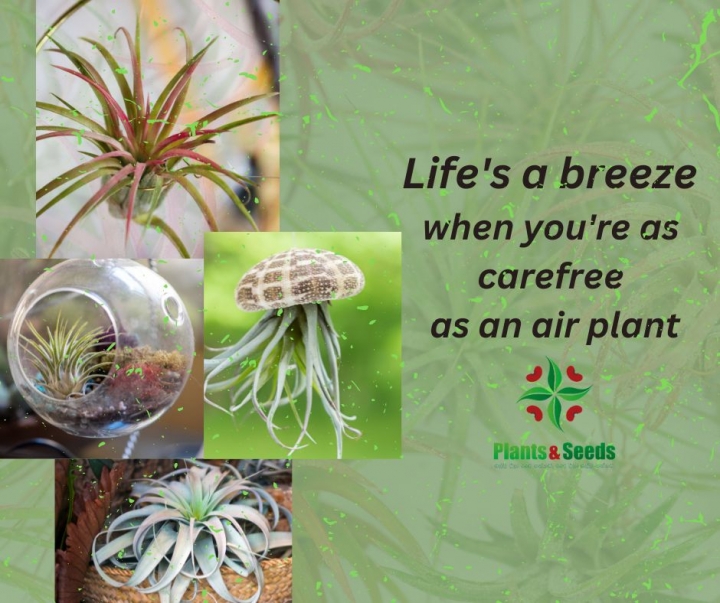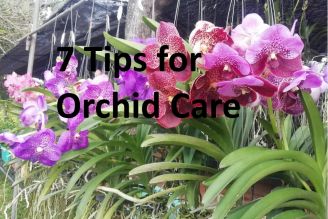Select your country
In a world full of roots, be an air plant – thriving without being tied down.
- 05 Feb 2024
- Written by : Gayathri Bandaranayaka
- Views : 1045
- ID : #0056

Introduction
The taxon, which is known scientifically as Tillandsia, consists of interesting plants commonly referred to as air plants due to their unusual lack of roots that allow them to be suspended with their leaves above ground. In contrast to soil plants, air plants are epiphytes that grow on other objects throughout the world with trees being prime targets; they also prefer rocks and even wires. This article will dive into the peculiarities of air plants, how to take care of them, and compare some popular types of air plants which you may find interesting for your home garden.
What are Air Plants?
Tepuis are peculiar rock mountains that frequently reach a height of more than 2,000 m and which are a constituent of Km. The plant-bearing top crust is usually socialistic but sometimes it lacks S. Adaptive reasons for the tetrahedral trees may be underwater flotation of bogs The engaging speechified trichomes absorbing moisture remain the unique adaptation of these plants that are devoid of soil to get their food. Air plants, popular amongst even novice plant individuals, are only measured in diverse sizes and embellishments offering a selection of shapes and colors.
First Maintenance Steps of Air Plants.
Maintaining air plants is not a daunting task and thus, it makes them good options for people who are always on the move or those who have no clue how to keep plants healthy.
Light: Air plants are best in light that is indirect and quite bright. Start by placing them near a window, but make sure that the sunlight is diffused, and they have also been developed under fluorescent light. Do not expose them to direct sun for longer intervals as this may cause leaf scorch in it.
Watering: The name air plant has come about because these plants get much of their water and other nutrients mainly from the air. For watering, spray those using that sprinkler bottle 2-3 times a week. Alternatively, submerge them in a bowl of water for 20-30 minutes once per week or so. Keep them until they stop to dry before putting them back into their display.
Air Circulation: Proper air circulation is a major and important caveat in keeping air plants. Provide good ventilation to them by helping them with a fan as the coming of stagnant air should also be avoided.
Temperature: The ideal temperature for the air plants ranges from 50° equal to 90°with the range of F (equal to 10 degree C and above 32). Prevent the plants from excessive freezing and heating, as it is harmful to them.
Fertilization: Though air plants derive nutrients from the atmosphere, they might improve when fed some fertilizers here and there. Apply a fertilizer that is made of water-soluble substances, has balanced nutrient contentions, and apply it one foliage during the growing period (spring and summer).
Types of Air Plants
Air plants are over six hundred varieties with different differences between them.
Tillandsia Xerographica: Tillandsia Xerographica –is an interesting plant with leaves featuring nice forms in that some curves and colors tend to be pretty silvery gray.
Tillandsia Ionantha: Most of these little-known Epiphytes are very Most of the small epiphytic flowering plants grow on other vascular green or red and could survive nearly everything.
Tillandsia Bulbosa: To be specific, it is possible to single this variety of air plants out by the traits that include a chubby top and withered leaves which are either rolled or thin. It can also be hung or mounted on the wall above adornment grounds.
Tillandsia Caput-Medusae: From its name gorgon vittate, the air plant resembles that appearance gotten from this myth of Medusa whose hair was snake and coiled up in curls release behind her.
Tillandsia Brachycaulos: This species is notable for being variegated; in some seasons, it adorns lush green foliage while on other occasions can prevail bright red leaves.
Conclusion
One such bizarre indoor hanging or sitting houseplant among your family of room greens is air plants. By this, these plants are relatively easy to grow and as such good for beginners familiar with plant lovers. The mesmerizing physical forms, lively colors or low-maintenance adaptation will – feel no doubt- make you an air plants junkie and inject a bit of life in every household. So, if we have to transfer the natural beauty inside let these wonderful air plants



